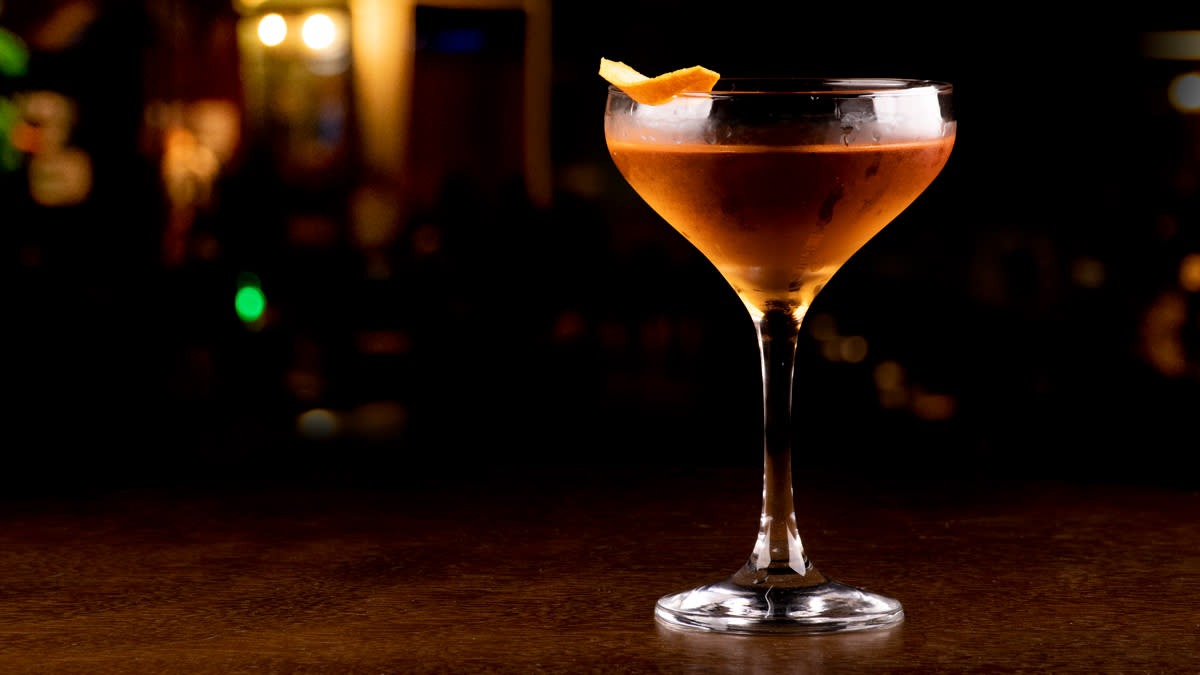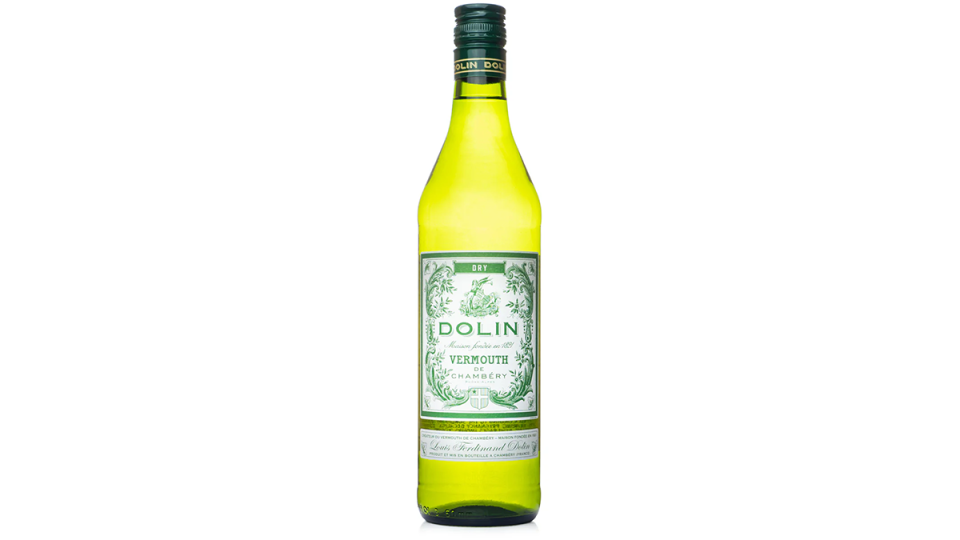How to Make a Chrysanthemum, the Sweet, Herbaceous Cocktail You’ll Want to Sip All Spring

The first time I had a Chrysanthemum, I couldn’t stop talking about it. I made it for everyone I knew. People would come into the bar and ask for a bartender’s choice—“something fruity with gin” they’d say, or “something stirred with scotch”—but sooner or later I’d talk them into a Chrysanthemum. I was like a parent serving a new dish to a first grader. “What’s in it?” they’d ask. “Just try it,” I’d reply. This lasted for months.
The Chrysanthemum, to be clear, was not even close to what these bar guests were looking for, but nearly all of them loved it, nonetheless. Now, I’m not saying this is the best drink in the world. There are more complex drinks than the Chrysanthemum, there are more inventive drinks and more refreshing drinks, but still to this day, I can’t think of anything more incredibly, insanely, unrelentingly pleasant than this bizarre little sipping cocktail from 1916.
More from Robb Report
How to Make a Single Village Fix, the Pineapple Cocktail for Mezcal Lovers
Inside Prélude, the Elegant New Austin Cocktail Bar by Award-Winning Chef Mathew Peters
How to Make a North Beach Cooler, the Devastatingly Tasty Tequila Cocktail
The reason I’d hesitate to divulge the ingredients is that this cocktail doesn’t sound like something you want, or at least, it isn’t something you already know that you want. It can be sweet, for one. There is no recognizable base spirit, for another. The ingredients, combined with the name, sound hopelessly antique, as if you should serve it on a doily. A Chrysanthemum is a combination of dry vermouth, the herbal French liqueur Bénédictine, and a touch of absinthe, and I’m sure you can tell, doesn’t fit into our neatly defined cocktail families (unless it does, more on that in a moment).
As for how much of each ingredient—well, that is the big question, and will greatly determine the character of the final drink.
The first printed mention of the Chrysanthemum comes to us, like so many classics, from Hugo Ensslin’s Recipes for Mixed Drinks in 1916, and is equal parts vermouth and Bénédictine, with a few dashes of absinthe. Ensslin was certainly onto something—these ingredients absolutely love each other—but his cocktail is an insane 50 percent liqueur and is way beyond the boundaries of what we now consider an acceptable level of sweetness.
Fourteen years later, in 1930, the recipe is picked up by Harry Craddock in his Savoy Cocktail Book, who adjusts it to two parts dry vermouth and only one part Bénédictine, a marked decrease in sweetness and a step forward to be sure. This is the version I first met in 2010, and the one I proselytized for—herbaceous and seductive, with a bold but manageable, apple-juice-like sweetness
More recently, bartenders have been twiddling with the ratios even further. In 2011’s PDT Cocktail Book, Jim Meehan mitigates the sweetness twice by both reducing the Bénédictine and doubling the absinthe to a full 0.25 oz. In the 2018 Cocktail Codex, the Death and Co. bartenders reduce the liqueur even further to a 5-1 ratio of vermouth to Bénédictine, and then point to the absinthe as bitters and call it an Old Fashioned variation. Most recently, in last year’s excellent Maison Premiere Almanac, the legendary Brooklyn bar calls for a 3:33-1 ratio but then for nearly a half ounce (!) of a particular brand of absinthe from Germain Robin. All of these are in service of taming the sweetness even further, making it drier and more acceptable for modern palates, and all of them are totally delicious.
For me, though, I don’t want to fight the sweetness; I also dial it back a bit from the classic, but not too much. For me, the Chrysanthemum is the perfect drink for occasions like Mother’s Day brunch, where a kiss of sweetness is right at home, and the angle of the sun in the sky makes the lower alcohol of a vermouth-based drink into an advantage. Think of the vermouth like white wine, lithe and mildly herbaceous, the absinthe a light licorice note that persists throughout, and the Bénédictine a deep and ambrosial spice, like sinking into a heavy blanket of cinnamon, honey, and mace. The Chrysanthemum is, as with the Widow’s Kiss, very good as a dry cocktail but extraordinary as a sweet one. Make one for someone you like. Ideally before they can ask what it’s made of.
Chrysanthemum
2.5 oz. dry vermouth
1 oz. Bénédictine
1 tsp. absinthe
Add all ingredients to a chilled mixing glass with ice. Stir briskly for 15 to 20 seconds, and strain off the ice into a chilled coupe or cocktail glass, and garnish with an orange peel, expressed across the top of the drink and then balanced on the rim.
NOTES ON INGREDIENTS

Dry Vermouth: The dry vermouth is pretty forgiving here, as far as styles are concerned. Even though you’re using a bunch of it, you’re not asking it to do the present-but-absent magic trick asked of vermouth in a Martini, so there’s more latitude for acceptable brands. Use what you’ve got. If you’re at the store and want guidance, you can’t go wrong the all-purpose winner Dolin Dry or the noble old Noilly Prat.
Bénédictine: Accept no substitutes. Bénédictine is great in general and great with dry vermouth in particular, and readily available and amazing in a bunch of great drinks, so I don’t see much of a reason to not insist on it. Note that Bénédictine is different from B&B, the latter being a pre-bottled mix of Bénédictine and Brandy, and not what we want here.
Absinthe: If you can, grab a green (verte) absinthe that doesn’t go too wild. The Butterfly Classic is, in my fairly extensive experience running an absinthe bar for a while, the most likely to be enjoyed on its own by the widest swath of people, so if you like making Absinthe Drips, consider it. It’s great here. Also great would be the old stalwart Pernod, or the excellent and explosively herbaceous St. George, among others.
Garnish: There’s some equivocation among the online recipes on lemon vs. orange peel, perhaps because of the sweetness. Lemon generally comes off as tart, while orange generally comes off as sweet, so you might think lemon would help here. It does not. Whatever sweetness-mitigation properties lemon oil might possess are offset by the strange medicinal quality it draws out of the rest of the drink. Orange peel, on the other hand, is a perfect match for the flavors.
Best of Robb Report
Why a Heritage Turkey Is the Best Thanksgiving Bird—and How to Get One
The 10 Best Wines to Pair With Steak, From Cabernet to Malbec
Sign up for Robb Report's Newsletter. For the latest news, follow us on Facebook, Twitter, and Instagram.

